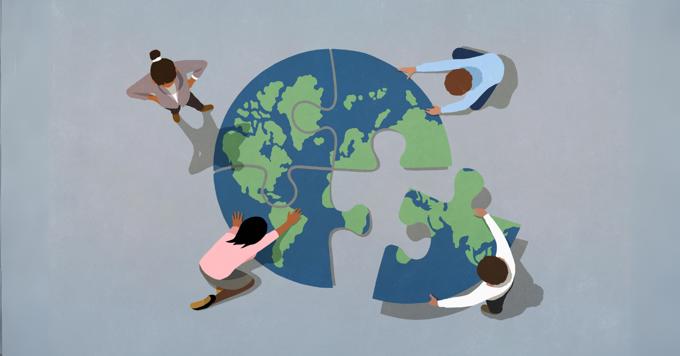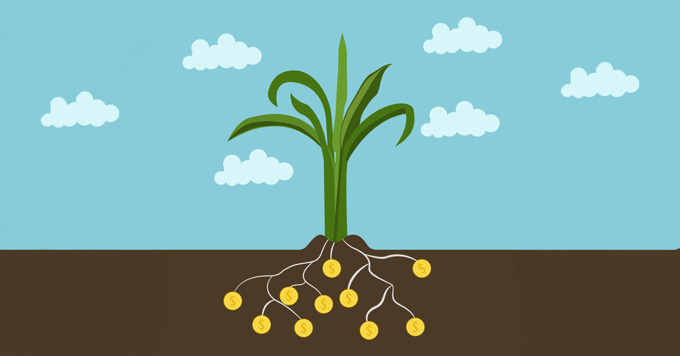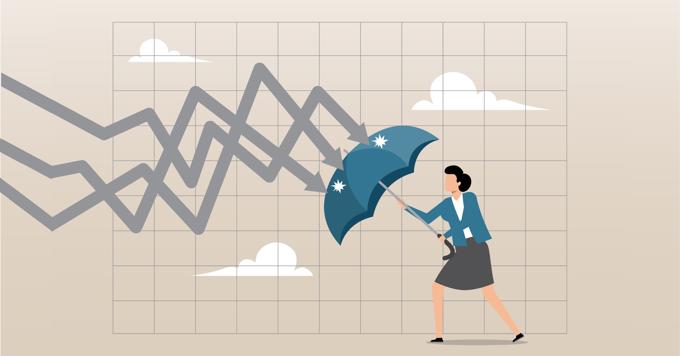For decades, we’ve measured economic success by how efficiently we extract resources and generate profits. The growth mindset has benefitted us, accelerating technological and social progress. However, that success has come at a steep ecological cost.
That growth has pushed nature past its limits — accelerating species loss, depleting soils, and polluting waterways. The very systems that underpin our economies are breaking down.
“We have become specialists in degeneration,” said Oana Branzei, the Paul MacPherson Chair in Strategic Leadership and Professor of Strategy and Sustainability at Ivey Business School. But it doesn’t have to be this way.
“If you give most human beings a choice that is financially neutral, with even odds of succeeding in competitive markets, who wouldn’t regenerate than degenerate nature?” she asked. “Most of us want to do better.”
For over a decade, Branzei has been asking a complicated question: how do we turn this degenerative momentum around? How do we build systems, rewire value chains, and shift industries from merely surviving extraction, pollution, and climate change to actively regenerate ecosystems?
“How do we work with nature rather than at nature’s expense?” said the researcher and a leading voice in organizational regenerative practices.
The key, said Branzei, lies in regenerative business strategies that reframe the purpose of growth. Instead of simply aiming to reduce harm, regenerative practices seek to create a net-positive impact. Success is measured not by what a company extracts, but by what it contributes — restoring ecosystems, strengthening communities, and renewing the resources that future profitability, and life in general, depends on.
Bridging the regeneration gap
The world’s business leaders are starting to catch up with Branzei’s pioneering research. At the 2024 World Economic Forum in Davos, Switzerland regeneration was placed firmly on the global agenda, reframing sustainability as a call to restore and revitalize natural systems.
In a panel that year, Gim Huay Neo, managing director of World Economic Forum Geneva, called on business leaders to find innovative ways to rethink economic models and incorporate more regenerative practices.
“We know that the growth that we’ve experienced over the years has been powered with an overconsumption of Earth's finite resources,” Neo told panellists. “The big question that companies have to navigate is, can they continue to grow, can they continue to generate profits, while cutting emissions and stopping depleting natural resources to give Earth time to regenerate itself?”
A 2024 survey from Kearney, a global management consulting firm, of 775 C-suite business leaders from around the world, found 58 per cent of respondents see developing more regenerative business models as an opportunity for their business.
However, there’s a gap between possibility and practice. A gap Branzei is seeking to bridge.
“Most people think the regenerative habits are really hard to build,” said Branzei. “The difficulty is switching off degenerative habits, because those dynamics have become so entrenched many of us have forgotten to question them, let alone hope and look for something we’d rather have instead.”
Lessons from Finnish lakes
Both a leading example of regeneration translating into business success and the focus of an upcoming multimedia case study from Branzei’s research — co-authored with Laura Albareda, Professor of Sustainable Business and Entrepreneurship at LUT Business School in Finland —Järki Särki (“smart roach”) is an award-winning Finnish brand recognized for its innovative approach to sustainability
The family-owned company, which was founded in 2016 by serial entrepreneurs Marja Komppa and Ari Seppälä (who also run the Komppa-Seppälä Organic Farm, producing organic honey under the Mielihyvin brand since 1990), is actively tackling both overfishing and nutrient pollution in local lakes by turning underutilized roach fish into high-value products.
Branzei said one of the things that’s striking about Järki Särki is that the entrepreneurs have structured their business around tackling an ecological problem they didn’t necessarily create.
Over the past century, nutrient overload from fertilizers, industry, and urban waste has triggered algae blooms in more than 1,000 Finnish lakes, disrupting ecosystems and driving biodiversity loss. Many of the lakes have become unswimmable and too full of waste to drink or fish from.
To restore lake health, Järki Särki turned to biomanipulation – an ecological method that improves water quality by changing fish populations. By harvesting roach, a small but nutrient-rich fish, they remove excess phosphorus from the water. With fewer roach stirring up sediments, water clarity improves, predator fish rebound, and the ecosystem begins to recover.
Branzei said the Järki Särki founders could’ve continued focusing on their successful honey business and farm, but they were troubled by witnessing their lake getting so polluted as kids that they couldn't even swim. By creating demand for an overlooked species, with superpowers in reversing some of the negative impacts of mid-century industrialization, they’ve provided consumers with a sustainable alternative to heavily and largely unsustainably fished stocks, such as tuna, while actively contributing to the restoration of freshwater ecosystems.
“Now they’re in their fifties and they can swim in the lake every morning because of the work they have done to co-create value with nature,” said Branzei.
In 2022, the company, which is carbon neutral, drawing power from wind and its own solar panel plant, was declared Finland’s Most Sustainable Product. As of 2024, Järki Särki has sold roughly 80,000 jars of roach and made its way onto the shelves of national grocery chains.
Branzei admits the Finnish fish preserve producer may not have the brand recognition of Canadian companies like KOTN or tentree (led by Ivey alumni Derrick Emsley, HBA '12) that use regeneratively grown cotton, or Veja, the French regenerative shoe company. “(But Järki Särki) shows the impact of organizing our business systems in a very compelling way on systems that were really desecrated,” said Branzei. “We need more stories of that possibility.”
The three-step reset
By design, regeneration requires a fresh start. It needs to be built into the foundations of the business. For businesses, regeneration can’t be reduced to a simple template. “You have to be embedded in nature and really understand the ecosystem,” said Branzei. “There is no copy and paste.”
So how can businesses begin? Branzei points to three critical stages.
1. Recognition: See the system clearly
The first step is acknowledging how your business model, supply chain, or industry contributes to ecological harm. This isn’t about blame; it’s about clarity. Leaders who can name the mechanisms of harm are better positioned to disrupt them.
2. Reimagination: Unlock new possibilities
Regenerative practices don’t begin with metrics; they begin with vision. Reimagination requires engaging directly with living systems, seeing their restorative capacity, and asking how business can align with that potential. This shift reframes growth from extracting value to creating it.
3. Commitment: Move from intent to practice
Inspiration alone is not enough. Commitment means choosing specific interventions — restoring biodiversity corridors, reducing nutrient overload, cleaning waterways — and embedding them in business models. Companies that commit create durable value for both ecosystems and markets.
For businesses, ecological degeneration is not just an environmental or moral issue; it’s a fundamental threat to supply chains, operational resilience, financial stability, and brand license to operate. But brands like Järki Särki are proving regenerative business practices can start and scale.
“Ultimately, business is the only mechanism that can regenerate nature. Everything the world has learned to do, it has learned to do because there were entrepreneurs that did it first,” said Branzei. “Now we have to learn again.”
Want to dive deeper? Read Albareda and Branzei’s full paper, Biocentric Work in the Anthropocene: How Actors Regenerate Degenerated Natural Commons, found in the Journal of Management Studies.












